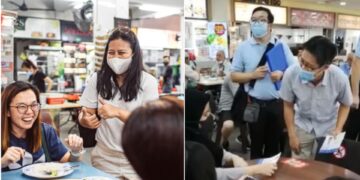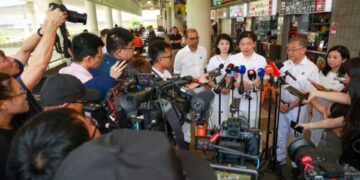1. HDB: half of two-room flexi flat buyers are aged 55 and above
The Housing Development Board (HDB) said that over half of the buyers of two-room flexi flats are aged 55 and above, with singles being the second-largest demographic to purchase these units since their launch.
Close to 34,700 two-room flexi flats have been launched for sale as of 31 December, following their introduction in 2015. Approximately 84 per cent of the 29,924 units offered have been reserved by home buyers, with selections being underway for the remaining 4,700 units.
56 per cent of these buyers were aged 55 and above, with 38 per cent consisting of singles and 6 per cent comprising families. Of the units purchased by older buyers, 92 per cent were on short leases, with the rest being on 99-year leases.
40-year lease units were the most popular option, with 4,046 units leased out at these terms. Next most popular was the 35-year lease at 3,526 units. As for the 30-year lease, 2,291 home buyers chose this option. 215 older buyers chose the shortest lease of 15 years.
Flats range from 36 to 46 sq m in size, and short lease two-room flexi flats will have to be paid fully upfront, with cash or with money from the Central Provident Fund and cannot be resold or rented out.
Government subsidies are also available, with the Silver Housing Bonus (SHB) providing seniors with a maximum cash bonus of $30,000 when they sell their existing flat and use the funds from the sale to add to their CPF Retirement Account. HDB said that 970 households have benefited from the SHB as of end December last year. First time buyers who are eligible for the Enhanced CPF Housing Grant (EHG) can receive a maximum of $80,000 and do not have to pay for a resale levy.
Two-room flexi flats will be included in the upcoming BTO sales exercises in May and August this year, for the towns of Geylang, Hougang, Jurong East, Tampines, Tengah and Woodlands.
2. Total fertility rate drops to historic low of 1.1 in 2020
During a Committee of Supply debate on Friday, 26 February, Minister in the Prime Minister’s Office (PMO) Indranee Rajah said that Singapore’s fertility rate fell to 1.1 in 2020, marking a historic low.
The fall was attributed to the delay in marriage plans for some Singaporeans due to COVID-19, as there were approximately 10 per cent fewer marriages in 2020 compared to 2019, with other Singaporeans having delayed their plans to have children.
Ms Indranee said that the Government’s dollar-for-dollar matching for the Child Development Account would be doubled from S$3,000 to S$6,000, for a second child.
She added that countries such as South Korea, Taiwan and Finland – recognized for having higher fertility outcomes – have also had a fall in total fertility rate (TFR), which refers to the average number of live births a woman experiences in her reproductive years. The resident TFR has been decreasing over the years, being 1.14 in 2019.
“Raising fertility is an uphill task for advanced societies, but we must continue to support those who wish to marry and have children,” she said.
3. MOH announces listing of close to 500 direct telemedicine service providers on its website
The Ministry of Health (MOH) said on Friday, 26 February, that approximately 500 direct telemedicine service providers have been found to fulfil their measures for processes and governance and have been registered on its website as of 22 February.
This voluntary listing by MOH has been launched to aid patients in making an “informed choice” when shortlisting a provider.
Suitable service providers will include those who have dedicated themselves to meeting the necessary training, process and governance measures set out by MOH.
MOH said that telemedicine services would add to the roles of general practitioners, polyclinics, specialists and the immediate and long-term care sector, adding that telemedicine brings greater convenience, more accessibility to medical care and medications, and bolsters “continuity of care”.
Citing the rise in the quantity of telemedicine providers over the past few years, the ministry added that there was a “need to ensure such providers offer services that prioritise patient safety and welfare”.
The ministry also said that only listed providers will be able to provide Community Health Assistance Scheme (CHAS) subsidies and/or submit MediSave claims under the Chronic Disease Management Programme (CDMP) for subsequent follow-ups of chronic conditions through the medium of video consultations. This will be applicable from 1 April.
MOH added that it “strongly encourages” providers to take part in the listing, as doing so will aid them in their transition to becoming licensees under the Healthcare Services Act (HCSA) in 2022.
Find the full listing of direct telemedicine service providers here.
Join the conversations on THG’s Facebook and Instagram, and get the latest updates via Telegram.














